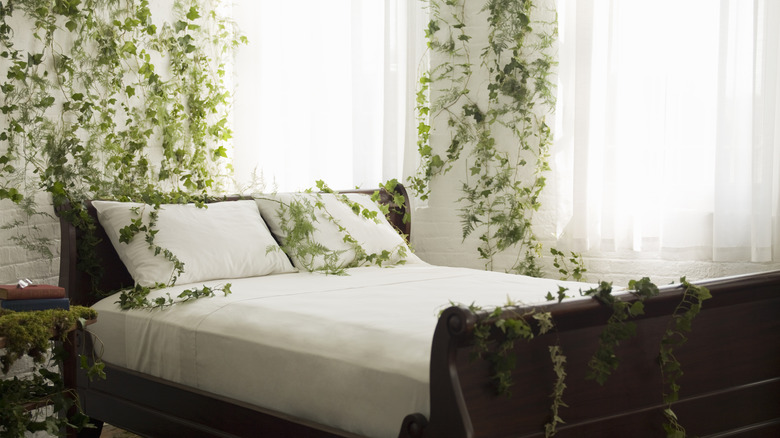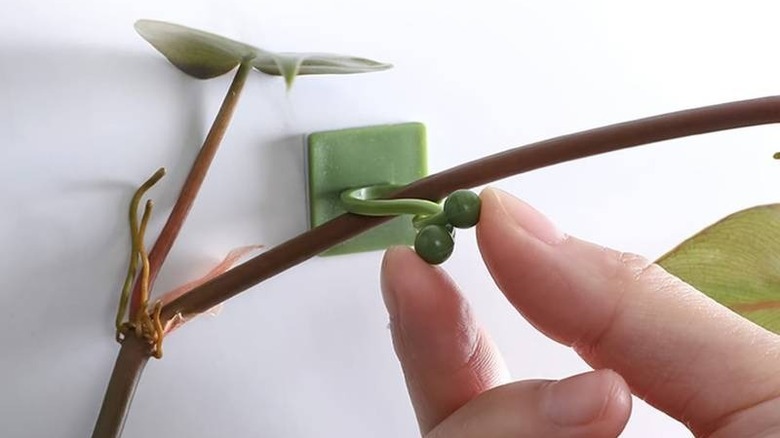Tiktok Shows Us The The Secret To Making Your Artificial Ivy Look Real
Ivy looks beautiful climbing up walls, but growing the real deal isn't always feasible. Whether you're worried that it will ruin your walls with its aerial roots or that your room is too dark to support long, healthy vines, the idea isn't always possible to implement. In those cases, most of us turn to artificial ivy to create the same storybook-like aesthetic. However, there is a certain stigma to using fake greenery in your home. For example, both Jeremiah Brent and David Bromstad avoid faux plants at all costs because they don't bring in the same energy and life as the real deal. But there is a great workaround to this. The trick is to make your ivy look natural, and according to TikTok, that hinges on how you hang it. The trick is to avoid hanging it straight down your wall. Instead, you want the vines to climb and spread across the wall.
This makes it seem like a real plant is growing on your walls since it mimics what the natural version would do. This makes it less noticeable to the naked eye that the plant is made from plastic or silk. However, there is an art to figuring out how the vines should clamber. Here's how to successfully arrange them so they mimic what you would see in nature.
How to hang your faux ivy
In order to hang your ivy realistically, you need to understand how the vine behaves in nature. First, you need to keep in mind that ivy likes to climb as a survival tactic. It uses walls, fences, and trees as a means to get higher up from the ground, where sunlight is more easily accessible. Because of that, your ivy should always be climbing upwards rather than reaching downward. Rather than hanging it from the ceiling and making the vines drape down, hang the beginning point near a lower surface and arrange the vines so they look like they're climbing up towards the ceiling or a light source, such as a window.
Second, the ivy looks for things to cling to. It needs something to hold onto, whether it's a picture frame, mirror, curtain rod, or a crack in the wall. Wrapping the vines around those items or pinning them on top of small cracks will mimic what you naturally see outside. This will make it appear a little less faux. This is also a great rule of thumb to keep in mind for all faux vining plants, and not just ivy. For example, you can utilize the same idea for faux pothos or philodendrons.
How to secure the vines to the wall
Now that you know how to arrange the vines, the next step is to figure out how to actually clip them to your wall. Luckily, there are several different methods you can choose from. The simplest way is to use thumbtacks. You can get clear thumbtacks at the dollar store, costing you next to nothing to pull off this hack. It's best to get a clear color so it blends seamlessly with your wall. This is a better alternative to using nails since it will leave behind small pinpricks in your walls rather than holes. You can then use them to either secure the plastic vine directly to the wall or as a means of draping the vine over it.
A second method is to use Wall Plant Clips, which you can get from retailers like Amazon for $10. These are green clips with adhesive backs that you can stick onto the wall. The clips hold the vines in between their pincers, securing them to the surface. These can be used with both natural and faux vines alike, and the green color helps them blend in with the greenery.

